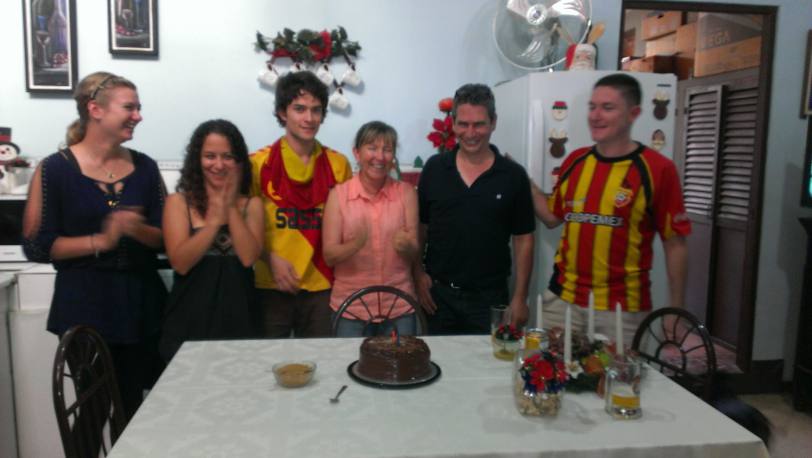ISEP student Renee, a Spanish major from the University of North Texas, is spending a whole year in Costa Rica at Universidad Nacional. Staying with a host family and taking classes in Spanish is helping her improve her Spanish — but she’s discovering that speaking like locals isn’t quite like the textbooks she’s used to. Here she gives her take on tico (i.e. Costa Rican) Spanish.
When people told me we don’t learn “real life” Spanish in school, they meant we don’t learn Tex-Mex Spanglish or even Mexican Spanish. And that’s true. But we also don’t learn Spanish from Spain, Argentinian Spanish, or Costa Rican Spanish.
So the question is, what do we learn? All I know is, when I told someone from Mexico I like torta (textbook: cake), he asked me what was so special about a sandwich. Then, when my mamá tica put tortas in front of me, I was surprised to see neither cake nor a sandwich, but rather meat patties.
Guys, there are eleven different words for “straw” in Spanish. Ask a tico for a popote and they’ll think you’re one confused gringo who’s making up words. And although I don’t personally have experience with it, I imagine a Mexican would have the same reaction if you asked for a pajilla.
And then there’s pachuco, or tico street slang. It’s so integrated into the culture that with nearly every new word I learn in conversation, I have to ask if it’s a palabra tica or not. And a lot of the time, people have to think about it for a second to be sure. So even for those who speak Spanish, tico Spanish takes some getting used to.
The picture above is my host family and me on my host dad’s birthday (hint: I’m the blonde). I’ve started picking up slang a lot more this semester, both because I understand Spanish better and because I have more tico friends. When two guys my age talk to each other, they don’t speak Spanish. They speak what I like to call “Mae”, as that’s the most common word. Mae is like dude or bro, but used a lot more commonly than the two combined.
“Mae, I went to the store yesterday, mae, and this mae kept looking at me like he knew me, but mae, I’ve never seen him before in my life. Mae, I don’t know…”
I never really listen to conversations between my host brother and his friends. It’s too much effort to keep up with all the slang and weird phrasings. I kind of just sit back and count the “maes.”
One of my mamá tica’s favorite things to do when guests are over is demonstrate my tico vocabulary.
“Renee, how do you get home from school?”
“Vengo a pata (I walk).”
“And what were you doing this afternoon?”
“Ruleando (napping).”
“And what do you need to find when you get back to the U.S.?”
“Brete (work).”
Actually, any tico laughs and thinks it’s cute when the gringa throws a slang word into a conversation or discussion. I’ve found it’s a good way to break the ice when people aren’t sure how to talk to the foreigner.
Anyway, long story short, no matter where I go or how good my Spanish becomes, I’ll always have a little tico in my Spanish.
Read the rest of this story — and TONS more, like what it’s like to live with a host family, or what it’s like to function day-to-day in a completely different language — on Renee’s hilariously well-written blog, The Quest for Pura Vida.
If you think you want to go on a language-learning adventure of your own, why not study abroad in Costa Rica? There, you can also volunteer and engage in your local community via ISEP’s Global Engagement Program at Universidad Nacional. Can’t do a year, or even a semester? You can still soak up Costa Rican culture, learn Spanish, and complete a community service project this summer. Apply for the Spanish Language, Costa Rican Culture, and Community Service Program at Universidad Nacional by May 1 and you’ll be well on your way to living like a local.
Like this Story? Also like us on Facebook.
